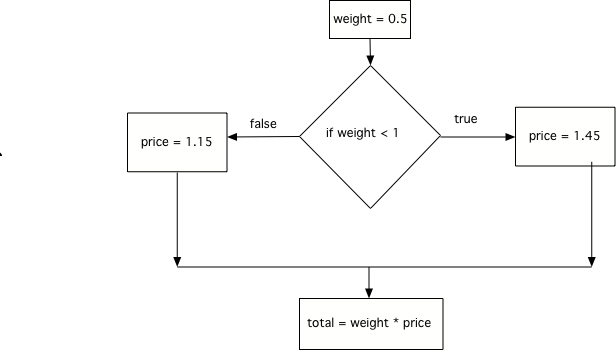Using if and else¶
Most professional programmers would write the following code:
Like this:
An else is an additional optional phrase on an if statement. IF AND ONLY IF the test in the if is false does the block of statements after the else get executed. Using an if with an else makes sure that either the if block is executed or the else block is executed, but never both.

Figure 4: Flow of execution for both an if and else¶
Mixed up programs
The following program should print out “x is even” if the remainder of x divided by 2 is 0 and “x is odd” otherwise, but the code is mixed up. The % symbol gives the remainder after the first number is divided by the second number. Drag the blocks from the left and place them in the correct order on the right. Be sure to also indent correctly! Click on <i>Check Me</i> to see if you are right. You will be told if any of the lines are in the wrong order or have the wrong indention.</p>
It is easy to write an if when you want exactly one block to execute, but you can accidentally create a “hole” – a condition where neither block executes. That’s what happened in the example below when the weight is equal to 1 pound.